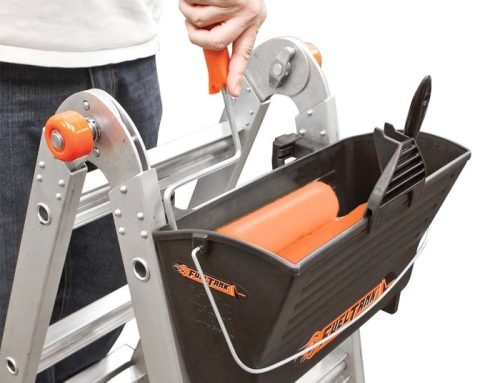At Hoswick in the southern Shetland Isles a fish ladder has been installed in a burn that was destroyed by flooding and landslides in 2003. For the past decade, native trout have been unable to navigate back to their spawning grounds higher up the river, because the rebuilding of the burn resulted in the water flowing thinly over the culverts below the new bridge. The trout were unable to swim up the shallow stream and angling stockists stopped putting new fish into the river here, depleting the local population of trout and impacting on the environmental cycle of which the trout were a vital part. The new fish ladder is part of a wider project to improve the natural environment in the area, including planting new areas to support waterfowl and other wildlife. The new fish ladder has three channels, each one going underneath an archway in the bridge over the river. It is a pool and weir type fish ladder, with five pools in each section, with a depth of around six inches, which the young trout can swim up easily. A small weir between each pool provides the channel for the fish to jump up into the next pool. When the water flow in the river is low, the fish ladder diverts all the water into one channel of the ladder, meaning it is always operational for the fish that use it. There are no longer problems with low water levels affecting fish migration and it is hoped that the construction of this fish ladder will inspire better fish ladders in the rest of the Shetland Isles and other places with similar topography.
New Ladder Design
Local residents and anglers came together to design and build the fish ladder. Neville Martin of Sandwick designed the ladder in conjunction with local anglers and the local council. Sandwick based builder David Smith installed the ladder, and although it was very different from his usual line of work building houses, it only took one week to build, blocking off the water from each channel at a time while the construction took place. John Bain, of the Shetland Anglers Association, which stocks burns throughout the area (around 150,000 young trout every year), is hoping for more work in the area to support the young fish and make it worthwhile stocking the burn again, as they have not done so for a couple of years. The improvements that Mr Bain would like to see are the construction of spawning pools for the two year-old fish. After staying in pools for two years, the trout naturally migrate to sea, and then return to their spawning grounds to mate and hatch. Usually, in a natural burn, pools will develop holding areas in and around the rocks, but after the devastation of 2003 much of this had been lost. New pools need to be created to offer the supportive environment the young fish need to develop and later on, return to for mating. It seems that the fish ladder is working though, as despite not stocking the Hoswick burn, he has seen young fish in there recently. These fish have found their way naturally to the burn and have successfully navigate the fish ladder, so it is proof that the model works and is being used. Hopefully, with more stock and some improvements to the upstream environment, this area will be popular again with both trout and anglers. Clever fish, now, should you ever be in need of ladders, steps or scaffolds for human use come on over to our main website and visit the Midland Ladders Store!






Leave A Comment
You must be logged in to post a comment.